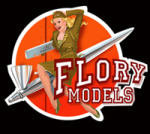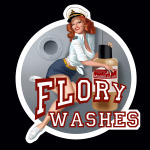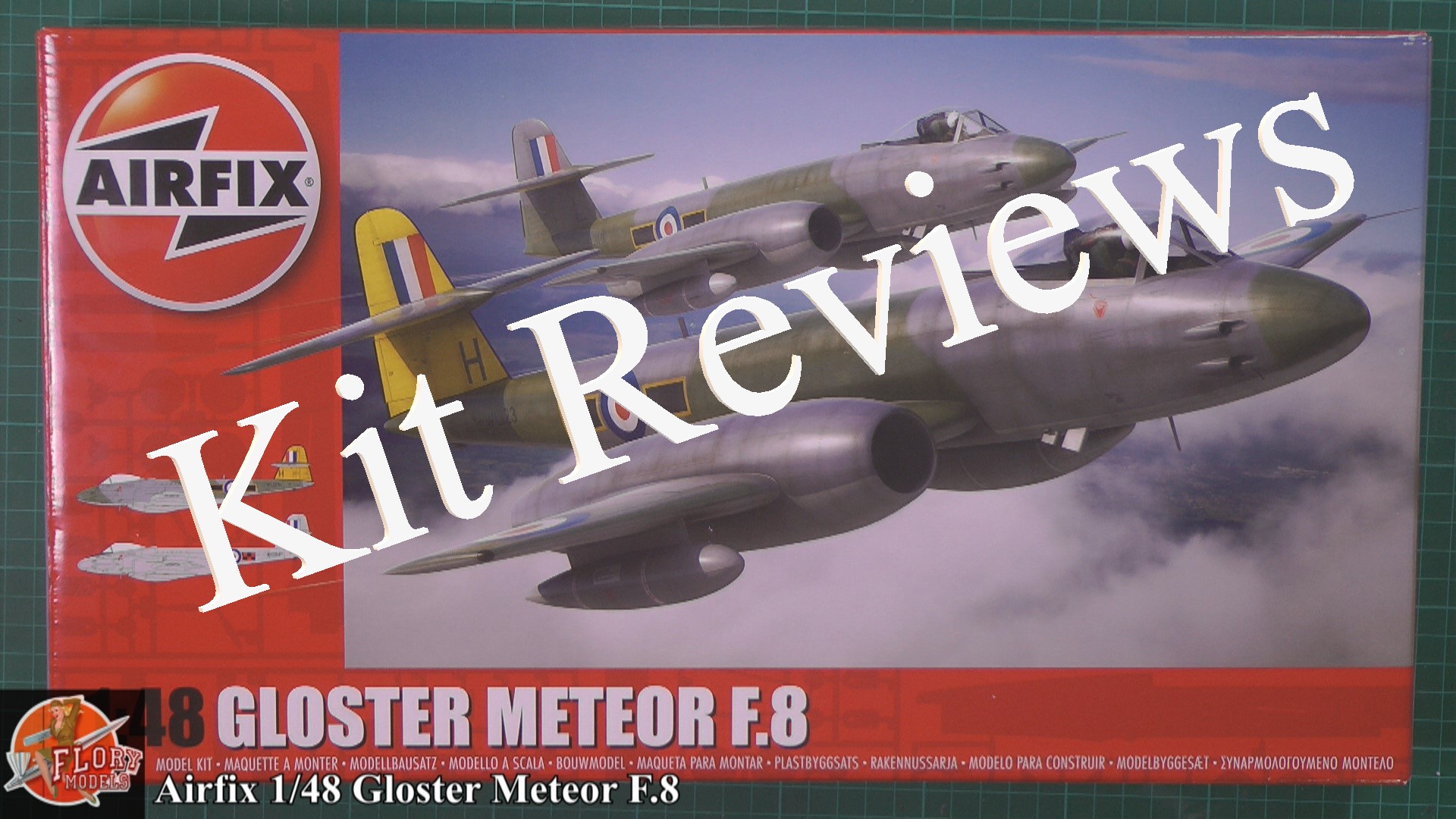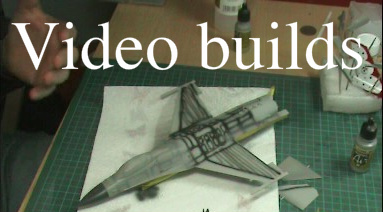Painting Aircrew by Rob Fitzgerald
I have been asked to do a little how to based on some of what I have learned so far in my quest to be a better figure painter. Now I should point out that I am far from being qualified to tell you how to do it so please treat this as a show and tell of how I do it.
There are two basic techniques when painting with acrylics - I am going to show you the quick and dirty cheats way 
The figure I have is not really ideal for a number of reasons but it's what I have so I will do the best I can - you will get the idea and it will be a bit more relevant than a naked lady on a dragon.
The figure in question is an ICM 48th scale RAF ground crew figure that I got with a Tamiya Spitfire. He will be painted in 'near enough' colours.
Here is what you get before we start gluing. There are the normal sprue joins to deal with and as we are going to be using washes (Sadly not the PM ones) we need to take a fair bit of care with mould lines as they will stick out like a sore thumb.
This guy is in overalls and I wont have the benefit of a belt to hide the join and I think I could have spent more time - but I didn't so please pretend you didn't spot it as I go on.
Once you have built your model cut a piece of plasticard just smaller than the sole of his feet (mine is only on one foot) and glue it on - around 0.5 to 0.6mm thick is about right ...
Then find yourself a suitable base - I wanted this one so it could be placed next to any suitable RAF aircraft so I sued a coin for the base - I used a 2 Stotinki coin. I think it's possible you might want to use a different coin ;-). Superglue and a spray of activator gets the job done ....
Now you need some fine sand - the right stuff for the job is kids playpit sand or sand from a tropical fish shop. Neither is available to me so I have to make do with horrible coarse sand that I sieve with a tea caddy (ps Zoe doesn't know yet so don't tell her). Cover your base with a thinnish coat of PVA (white wood/craft glue) and dip the base in. When it's dry (around 4/5 hours thin some more PVA with water (around 50/50) and paint over the top of the sand to seal it all in...
The piece of plasticard makes sure he looks like he is walking on top of the base and not sunk into it.

Now give the model an undercoat. Like Phil (because of Phil actually) I use Tamiya Acrylics in my airbrush thinned around 50/50 with Tamiya thinners.
Nice light dusted coats and be careful not to overdo it or you will lose all the fine detail.
You might be thinking that black is all wrong - and for some things you would be right but the black undercoat will help us cheat - all will be revealed ....

OK - my camera isn't enjoy these colours so I will play with the settings for the next shots.
I am using Citadel paints - these are arcylics and are fantastic for brush work. You need to thin them with water - I uses distilled water, it's not expensive and won't create odd effects (have you ever seen the list of chemicals in tap water?)
Everything you read will tell you to thin to the consistency of skimmed milk - well I have never tried to paaint with milk so find that a useless comparison - what I can tell you is that when you have it right you will know. Around 50/50 is about right.
This colour is called Fenris Grey but of course it is blue. Hopefully it looks too blue and too bright - it's meant to at the moment. Right now you will struggle to notice that the blue doesn't quite reach the tops of the socks and does 'fold over' around the cuffs and his collar ...

These colours are what figure painters call basecoats - almost like priming in colour.
I have now done the sock tops with Dheneb Stone the hair with Scorched Brown and the white shirt with a creamy colour called Bleached Bone and the Black Leather boots with a mix of Chaos Black and Adpetus Battlegrey
Now you are probably wondering why not do the white shirt in white and the black boots in black? it's a good question. Well we can't add any shadows to black as it's the darkest 'colour' we have and we can't highlight white either.
Again - I have left a thin black line between the socks and the uniform and the shirt colour and the uniform colour

The base I painted with a great colour called Charadon Granite - use an old brush for this as the texture of the sand is not at all kind to brushes.
The base now needs drybrushing and this can be messy so I like to get this out of the way before I start hi lighting.
I have used a wash on the base though using Citadel's Devlan Mud.
Sorry about the poor focus but you will get the idea.
First off is a heavy drybrush with Calthan Brown, then a medium highlight with Kemri Brown - finally a very light one with Bleached Bone. Looks Rubbish doesn't it - trust me it will get better.


Just before I did the base as I just showed you I actually gave the whole figure a REALLY heavy wash with Citadel's Devlan Mud. I was a bit worried this was the wrong way to go but now I am happy is going to capture what I am after.
I am trying to get quite mono tonal with this figure. it's something I wanted to try and this is the first suitable figure I have had to do it with.
Imagine a photo of the crew man walking across a parched airfield at the end of the summer, lateish in the evening - will I catch that - we will have to see, it's all new to me too :-)
After the wash it should start to be looking REALLY horrible - don't panic, it's OK.
NOTE - use a largeish brush and give it a heavy single coat and don't be tempted to play with it. And with a heavy coat you MUSt let it air dry on it's own - it will take ages so we will pick this up tomorrow.

Now to start basecoating the flesh areas. Normally I would have done this before the first wash but I have just read an article that describes a slightly different range of colours for faces so thought I would try it out on this chap.
The basecoat is Tallarn Flesh - again, try to leave a thin black line (the undercoat colour) between the face and the cap and the collars etc. Also you will see I have left thin lines between the fingers - you will notice it looks quite ridiculous - don't worry.
I also painted a line of the Devlan Mud wash in the middle of the sock tops - when I finish those it should give the effect of the tops and bottoms standing proud where there are rolled over.

The flesh has now been washed with Gryphone Sepia and the socks has been drybrushed with Dheneb Stone, Bleached Bone and then Skull White. I did them now as I suspected it's made a mess of the boots.
Onto the first highlight of the uniform - I have deliberately made this VERY stark so you can see what's going on. You need to use very thinned coats (as I did) but I feathered the coats a little less at their edges so you can see what I am doing.

The final highlight is the same Fenris Grey (blue) with about 40% Astronomican Grey thrown in. This time you are looking for the very highest parts - imagine which parts would catch the light? - It can be useful to have a torch to hold over the figure where you imagine the sun to be coming from, what catches the light? what is in shadow ?

The flesh was given a second wash of Ogryn Flesh and the first highlight that was a 50/50 mix of Dwarf Flesh and Bleached Bone. You are covering most of the flesh but stay away from the neckline and the cap/hairline. I will try and find some drawings later that show you where you should be avoiding but miss either side of the nose and the eye sockets and under the chin.
I also did a VERY thin filter wash of Fenris Grey over the uniform to hide some of the starkness I put in so you could see what I was doing.

I tidied up the shirt and tie - did a few grey highlights on the boots and did the final highlight on the face with Bleached Bone
OK - all done.
Let me just say again - this is NOT how to create show winning figures but it is a way to produce acceptable looking support figures as parts of dioramas etc - I will leave that for you to decide.
OH - and I don't need a RAF ground crewman in 48th scale - do you need one?
















